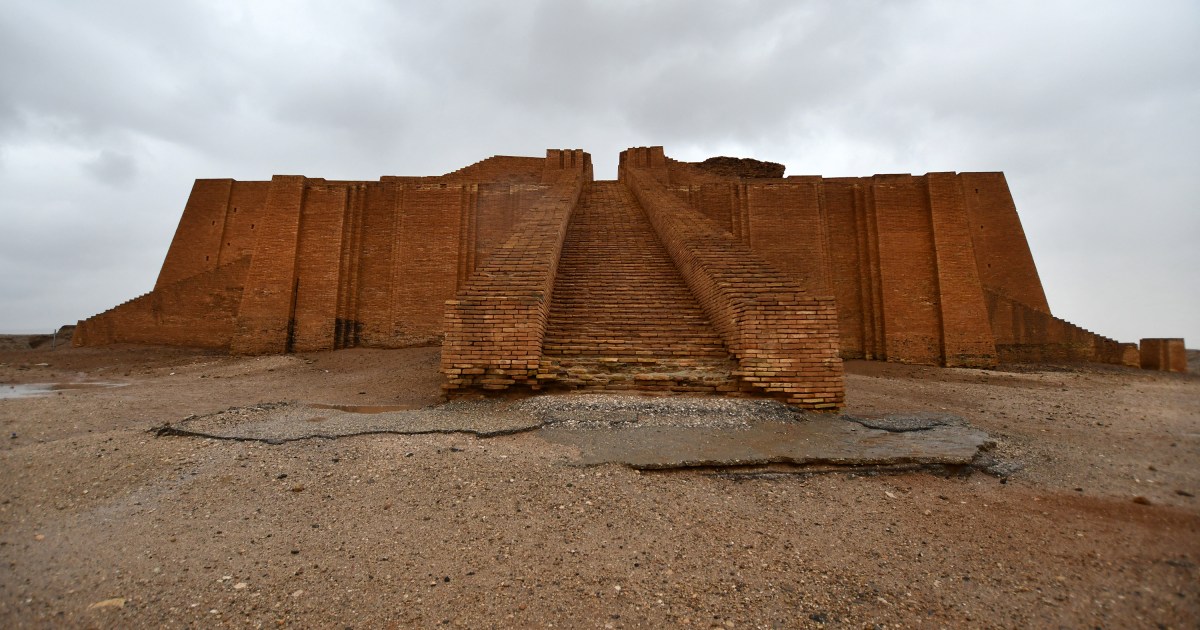Nasiriya, Iraq This is where the wheel was invented, the code of Hammurabi – or the rule of law – was first established, and where oil was first burned as a source of energy.
It is the ancient Iraqi city of Ur – located in the province of Dhi Qar, 300 km south of the capital Baghdad – and where Pope Francis plans to visit during his historic three-day trip to the country.
More than 6,000 years ago, Ur emerged as one of the world’s first major urban centers and centuries later developed into the center of the then world economy with its factories producing rugs and woolen garments for export within Mesopotamia and abroad.
Ur – also called Tal al-Muqayer – is considered one of the most important archaeological sites in history. 
The pope is expected to host an interfaith meeting in Ur on Saturday.
Dhi Qar is the heartland of the ancient Iraqi civilization of Sumer and contains the ruins of Ur, Eridu, Lagash, Gisu, Umma and Bad tibira, or the wall of the copper workers.
In July 2016, UNESCO placed Ur on the World Heritage List, in addition to the swamps in southern Iraq, and other sites such as Eridu and Al-Warka.
During his visit to Iraq, Pope Francis will visit meetings with politicians, religious figures and archaeological sites in the cities of Najaf, Erbil, Mosul and the capital, Baghdad.
 The stairs leading to the top of the Ziggurat temple [Asaad Mohammed/Al Jazeera]
The stairs leading to the top of the Ziggurat temple [Asaad Mohammed/Al Jazeera]A life of opulence
Ur is one of several cities built by the Sumerians and made it the capital of their state. When they settled in southern Iraq around 3,500 BC, they surrounded it with walls and built markets, workshops and agricultural villages inside. This resulted in the development of primary commercial transport routes with other cities and countries at the time.
Excavations in the early 1900s in Ur indicated that the inhabitants lived a luxurious life as the city prospered with the cultivation and trade of wheat and barley. Excavations continue to this day, as there are still undiscovered treasures that will provide further insight into one of the world’s first progressive cities.
Archaeological excavations have been banned for decades due to conflict and security issues. But Iraqi and American researchers began excavating the area a few years after the fall of dictator Saddam Hussein.
“During the 2007 excavation season in the ancient city of Ur, we found about 100 tablet objects containing important ancient texts,” Mustafa al-Hussaini, an archaeologist from Nasiriya, told Al Jazeera.
‘When we studied the texts with the help of the American University of Stony Brook, it was discovered that these tablets are a miniature library. I discovered about 45 of them, “he said.
The Sumerians developed irrigation systems and grain cultivation, as well as cuneiform writing used in ancient Mesopotamia and Persia. They also developed an algorithm on which the time measurement to date is based.
Sumerian society recognized the mother’s leadership role in the family, and women commanded high respect. Another cultural legacy of Sumerian civilization was poetry and pottery.
 Tourists stand in front of the Ziggurat Temple in the ancient city of Ur [Asaad Mohammed/Al Jazeera]
Tourists stand in front of the Ziggurat Temple in the ancient city of Ur [Asaad Mohammed/Al Jazeera]Oldest pyramid
The British archaeologist Sir Leonard Woolley, who excavated in Ur in 1922, discovered a royal tomb that resembled the pharaonic in the pyramids of Giza in Egypt.
The Sumerians were interested in building temples from mud and asphalt. An ancient Ziggurat, or terrace-shaped compound, still stands in Ur and is considered one of the oldest pyramids of Mesopotamian civilization.
The complex next to the Ziggurat is said to date from around 1900 BC and at one time was the home of the prophet Ibrahim, who was known to Abraham by Christians and Jews.
Amer Abdulrazzaq, head of the Nasiriyah Civilization Museum, explained why Ur is considered so important to Christians, Jews and Muslims.
‘Ur is the birthplace of the Prophet Ibrahim and it is mentioned in the Torah and the Gospels, and therefore all religions regard him as their spiritual father.
“Therefore, visiting the land of his birth is considered one of the most important religious rituals of the Christian pilgrimage,” he told Al Jazeera.
Surveys conducted by al-Hamdani and US archaeologists indicate that there are 15,000 archeological sites in Iraq.
“In Nasiriya alone, there are about 1,200 archeological sites, which is equivalent to all the antiquities of France and Italy combined,” he said.
Pope Francis’ historic visit aims to promote the morale of the beleagured Christian minority in Iraq, which has declined in recent years amid wars and persecution, and to encourage religious coexistence between Muslims, Christians and other minorities .
“Politicians must promote the spirit of fraternal solidarity,” the pope said Friday.
‘There’s corruption, abuse of power, that’s not the way. At the same time, you need to think about justice, transparency, to strengthen certain values, this is how credibility can grow so that everyone, especially the young people, can have hope for the future. ”
 The complex next to the Ziggurat is said to date from around 1900 BC [Asaad Mohammed/Al Jazeera]
The complex next to the Ziggurat is said to date from around 1900 BC [Asaad Mohammed/Al Jazeera]